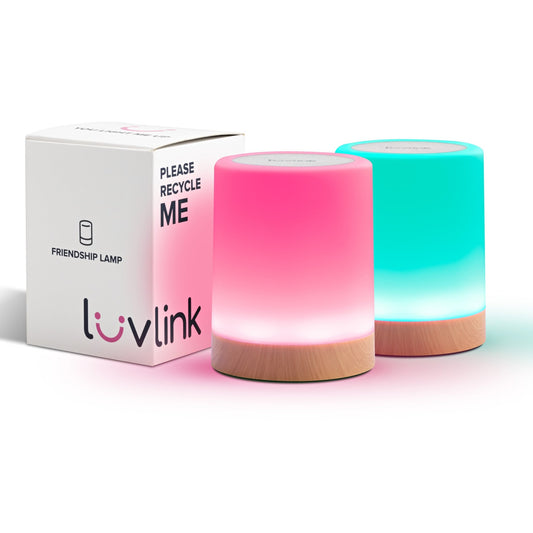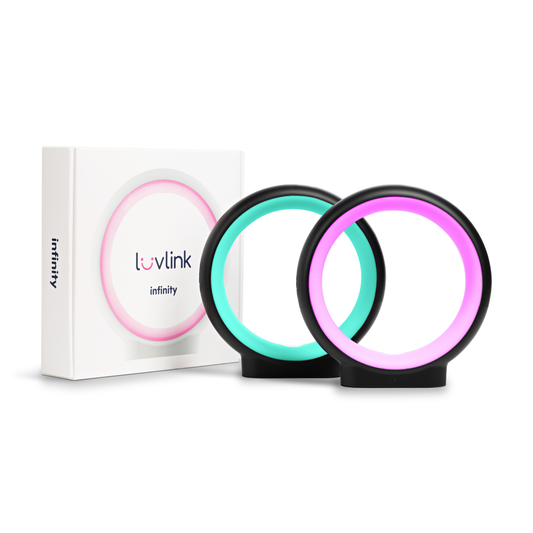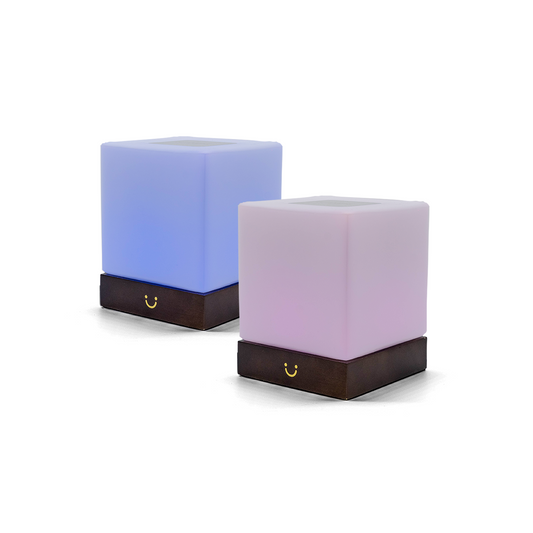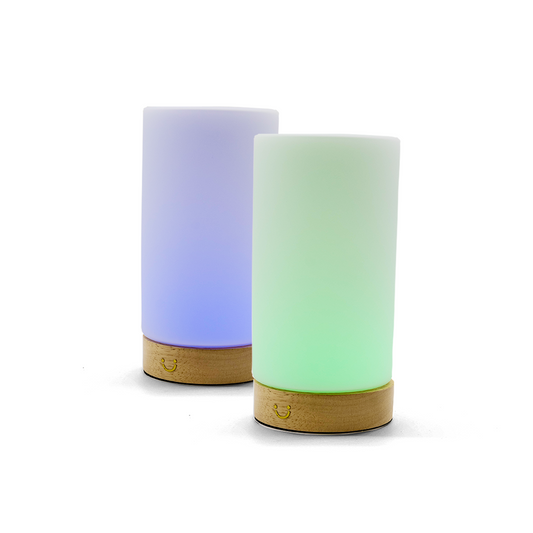Staying emotionally connected is an important part of any relationship; for a long-distance relationship, it is critically so. The fact that you're in a relationship and willing to bet your money (and your future) on an LDR is already a testament to the fact that you have an emotional connection with your partner or spouse that transcends physical distance and even physical intimacy at some level. But how do you keep it that way? Are there things you can do in order to connect deeper on an emotional level? Are there intimacy issues preventing you from staying emotionally connected and strongly attracted to each other despite the distance?
Let's explore the challenging terrain of long-distance relationships and how to stay connected on an emotional level while
dealing with the miles that physically separate you. Through this discussion, remember that your need for a solution to the dilemma of staying emotionally connected stems from the need for intimacy (emotional, above all) with the one you love.
The Art of Compromise
The art of compromise has been greatly misunderstood by couples struggling to stay emotionally connected with each other, even in geographically-close relationships or GCRs. This is greatly amplified in an LDR because of the lack of physical intimacy as an additional hurdle. The problem is largely one of ego. Often, neither person in a long-distance relationship wants to compromise because it often equates to a 'loss of face' or the 'giving up' of something precious. That's not a healthy attitude toward the art of compromise.
One of the reasons a compromise is seen as undesirable is its very definition. Here's how the word 'compromise' is usually defined:
"settlement of differences by arbitration or by consent reached by mutual
concessions"
"to make a
shameful or disreputable concession"
"to cause the
impairment of"
"to expose to
suspicion,
discredit, or
mischief"
Well, no wonder the word 'compromise' is held in contempt by most people. The word itself is used to refer to something negative in most of its forms. It's gotten such a bad rap that it is no longer considered a positive or creative answer to an otherwise irreconcilable situation.
But consider these older - even obsolete - meanings of the word from history:
"to
bind by mutual
agreement"
"A compromise is a situation in which people
accept something slightly different from what they really want, because of circumstances or because they are considering the wishes of other people."
"something midway between two or more different things"
"to
pledge mutually"
These definitions have a distinct positive tilt to them. Note the use of the words 'bind', 'agreement', 'accept', and 'pledge.'
But possibly the one who said it best was the 44th President of the United States, Barack Obama:
"A good compromise, a good piece of legislation, is like a good sentence or a good piece of music. Everybody can recognize it. They say, 'Huh. It works. It makes sense."
That's the essence of what we want you to take home today about the word 'compromise'. A compromise can certainly be seen as the 'giving up' of something or 'conceding' to something you don't necessarily like or want. But try to see it as something positive that you 'pledge' to do that will 'bind' you together and help you stay emotionally connected.
In the context of a long-distance relationship, a compromise might be a simple thing like giving up your Friday night with your buddies to spend time online with your bae. Or it might be the frequent miles you travel to be with each other on every possible holiday or long weekend. These things are compromises, yes, but they yield positive results. So, focus on what you're getting out of it rather than what you're giving up for it.
In many ways, it's almost like looking at the glass of milk as half full rather than half empty. That's how you transform the negative connotations of concessions and turn it into a forward move towards what both of you really want - to stay emotionally connected.
The Tools of the Trade
Every trade has its unique and indispensable tools. Long-distance relationships have theirs, too. In this case, however, the tools are primarily meant for communication. The usual ones are your smartphone or your laptop on which you connect with each other virtually, but you can get really creative in this area as well. Here's one alternate form of communication that's making quite a buzz on the Internet, especially in this time of social distancing, self-isolation, restricted travel, and the general fear of socializing that marks the era of the novel coronavirus and COVID-19:
Long-distance Relationship Lamps
Also known as Wi-Fi touch lights, relationship lamps, friendship lamps, or long-distance lamps, these lamps offer a unique way for long-distance couples to communicate with each other without words. Words are overrated sometimes, and these lamps let you reach out and touch the other person in a virtual yet intimate way that helps you stay emotionally connected no matter what time of night or day it is.
How do friendship lamps work?
Two (or more) lamps are set up in different locations and connected to their respective Wi-Fi signals. They are then logged into a common user ID called a Group ID, and a specific color is chosen for each lamp. Once the lamps have been set up this way, if one of the lamps is touched, the other or others will light up immediately in the pre-selected color of the lamp that was triggered.
 How does a relationship lamp help you stay emotionally connected to each other?
How does a relationship lamp help you stay emotionally connected to each other?
Studies show that "the more sensitive someone is to social rewards, the better they feel during social interactions with familiar faces." When your lamp lights up in the color your long-distance spouse or lover chose, your mind automatically conjures up their face. And when that happens, a hormone called dopamine is released by your brain. Dopamine affects the body in many positive ways, and one of those is its role as a mood-enhancer. So, when you touch your long-distance lamp, it automatically elevates the mood of the other person by reminding them of you at that very moment. What a fantastic way to stay emotionally connected! There's a ton of
psychology behind it, too, if you're interested.
The best part is that this is a non-intrusive method, which means you won't be disturbing them with a phone call at a bad time or anything like that. It just triggers a positive sensation the moment they see the lamp light up in the color you picked. And it works both ways.
Here's
where to buy a pair of long-distance lamps.
Virtual Reality (VR) Headsets
This advanced technology is a great way for long-distance couples or anyone with a friend or family member living far away to connect with each other virtually. Millions of LDR couples, as well as friends and families separated by distance, use apps like Google Earth to visit special places together in a virtual reality world.
Why is VR a great experience for long-distance relationship couples?
Virtual reality gives your brain an impression of physical proximity. Just like a Wi-Fi relation lamp triggers the brain to release feel-good chemicals, being physically close (even on a virtual platform) can act as a mood elevator. It's far better to experience this feeling first hand, so this is definitely a tool you should consider for your LDR kit.
Dedicated Video-calling Hardware
Of course, you can make zoom calls on your smartphone, tablet, laptop, or desktop, but having special hardware like the Amazon Echo Show offers a ready-to-use solution that you can keep on your desk or your bedside table. It's also a fantastic way to get more emotionally connected because you know you can reach out and talk to them whenever you really need to.
The reason we recommend something like this is because we have a tendency to put things off for later. In a long-distance relationship, communication is the one thing you cannot afford to put off, even if the conversation is going to be a hard one.
As alternatives to the Echo Show, you can use the Google Nest Hub Max or the Lenovo Smart Display, which are essentially from the same category of smart speakers with a screen.
The Art of Gifting
Unlike what happened to the art of compromise, which has been twisted and mutilated beyond recognition, the art of gifting has been diluted by excess. Christmas gifts, birthday gifts, valentine's day gifts, father's day gifts, mother's day gifts, and even national bubble wrap appreciation day gifts (yup, it's a thing.) There are gift ideas and merchandise advertisements for everything under the sun. Someone got so fed up with it that they even created a National Nothing Day, on which absolutely nothing was to be celebrated. Ironic, no?
What's worse is that people are under the impression that spending a lot of money on a gift is the way to go; in other words, the more you spend, the more you 'love' the receiver of the gift. That couldn't be further from the truth. A gift is merely a token of love shown by the giver of the gift. At the other end of the spectrum, there are those that feel it's okay to give cheap, random gifts just because "it's the thought that counts." Yes, the thought certainly counts, but only if you make it count. A good gift or appropriate present doesn't have to be expensive to be appealing to the receiver. It needs to be timely, practical, fun, useful, pleasurable, memory-invoking, or any combination of thereof.
Every gift must be a carefully-thought-out act of giving. It's like childbirth: you conceive it, incubate it, and then deliver it. You don't just buy something random and keep your fingers crossed that it will be well-received.
Staying Emotionally Connected in an LDR
In summary, the art of compromise, the tools of the trade, and the art of giving can collaborate to help you and your long-distance partner stay emotionally connected and even deepen your connection over time. Of course, there are other elements that go into making a delicious LDR recipe, such as respect for each other, a high degree of trust, the willingness to defend each other, and more. Nevertheless, the three ingredients we've discussed today are the core essentials of a long-distance relationship that will stand the test of time - and distance.
 How does a relationship lamp help you stay emotionally connected to each other?
Studies show that "the more sensitive someone is to social rewards, the better they feel during social interactions with familiar faces." When your lamp lights up in the color your long-distance spouse or lover chose, your mind automatically conjures up their face. And when that happens, a hormone called dopamine is released by your brain. Dopamine affects the body in many positive ways, and one of those is its role as a mood-enhancer. So, when you touch your long-distance lamp, it automatically elevates the mood of the other person by reminding them of you at that very moment. What a fantastic way to stay emotionally connected! There's a ton of psychology behind it, too, if you're interested.
The best part is that this is a non-intrusive method, which means you won't be disturbing them with a phone call at a bad time or anything like that. It just triggers a positive sensation the moment they see the lamp light up in the color you picked. And it works both ways.
Here's where to buy a pair of long-distance lamps.
Virtual Reality (VR) Headsets
This advanced technology is a great way for long-distance couples or anyone with a friend or family member living far away to connect with each other virtually. Millions of LDR couples, as well as friends and families separated by distance, use apps like Google Earth to visit special places together in a virtual reality world.
Why is VR a great experience for long-distance relationship couples?
Virtual reality gives your brain an impression of physical proximity. Just like a Wi-Fi relation lamp triggers the brain to release feel-good chemicals, being physically close (even on a virtual platform) can act as a mood elevator. It's far better to experience this feeling first hand, so this is definitely a tool you should consider for your LDR kit.
Dedicated Video-calling Hardware
Of course, you can make zoom calls on your smartphone, tablet, laptop, or desktop, but having special hardware like the Amazon Echo Show offers a ready-to-use solution that you can keep on your desk or your bedside table. It's also a fantastic way to get more emotionally connected because you know you can reach out and talk to them whenever you really need to.
The reason we recommend something like this is because we have a tendency to put things off for later. In a long-distance relationship, communication is the one thing you cannot afford to put off, even if the conversation is going to be a hard one.
As alternatives to the Echo Show, you can use the Google Nest Hub Max or the Lenovo Smart Display, which are essentially from the same category of smart speakers with a screen.
How does a relationship lamp help you stay emotionally connected to each other?
Studies show that "the more sensitive someone is to social rewards, the better they feel during social interactions with familiar faces." When your lamp lights up in the color your long-distance spouse or lover chose, your mind automatically conjures up their face. And when that happens, a hormone called dopamine is released by your brain. Dopamine affects the body in many positive ways, and one of those is its role as a mood-enhancer. So, when you touch your long-distance lamp, it automatically elevates the mood of the other person by reminding them of you at that very moment. What a fantastic way to stay emotionally connected! There's a ton of psychology behind it, too, if you're interested.
The best part is that this is a non-intrusive method, which means you won't be disturbing them with a phone call at a bad time or anything like that. It just triggers a positive sensation the moment they see the lamp light up in the color you picked. And it works both ways.
Here's where to buy a pair of long-distance lamps.
Virtual Reality (VR) Headsets
This advanced technology is a great way for long-distance couples or anyone with a friend or family member living far away to connect with each other virtually. Millions of LDR couples, as well as friends and families separated by distance, use apps like Google Earth to visit special places together in a virtual reality world.
Why is VR a great experience for long-distance relationship couples?
Virtual reality gives your brain an impression of physical proximity. Just like a Wi-Fi relation lamp triggers the brain to release feel-good chemicals, being physically close (even on a virtual platform) can act as a mood elevator. It's far better to experience this feeling first hand, so this is definitely a tool you should consider for your LDR kit.
Dedicated Video-calling Hardware
Of course, you can make zoom calls on your smartphone, tablet, laptop, or desktop, but having special hardware like the Amazon Echo Show offers a ready-to-use solution that you can keep on your desk or your bedside table. It's also a fantastic way to get more emotionally connected because you know you can reach out and talk to them whenever you really need to.
The reason we recommend something like this is because we have a tendency to put things off for later. In a long-distance relationship, communication is the one thing you cannot afford to put off, even if the conversation is going to be a hard one.
As alternatives to the Echo Show, you can use the Google Nest Hub Max or the Lenovo Smart Display, which are essentially from the same category of smart speakers with a screen.





